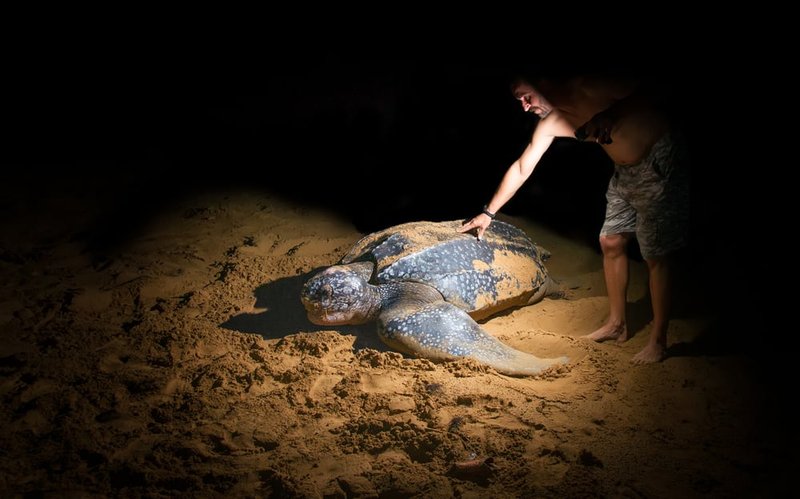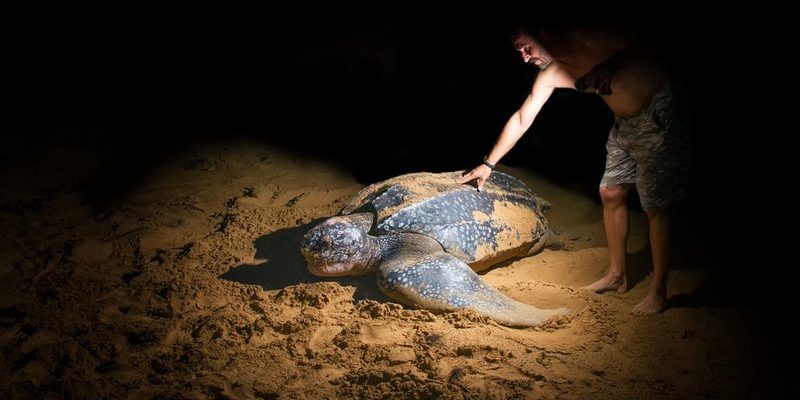
Understanding the Leatherback Turtle
Leatherback turtles are fascinating beings, easily recognized by their large, leathery shells rather than the hard shells of other turtles. They can weigh over 2,000 pounds and can grow up to 6 feet long! These amazing creatures have a unique diet primarily consisting of jellyfish, which are often confused with plastic bags. This leads to some serious problems for them, as ingesting plastic can be fatal.
One of the most striking features of leatherbacks is their ability to dive deep into the ocean, reaching depths of over 4,000 feet. It’s like they have their own scuba gear! Their body is built for this purpose, with specialized adaptations that allow them to withstand cold temperatures and high pressures. This incredible diving ability makes it quite challenging to interact with them in their natural habitat.
You might be wondering why these turtles matter in the larger ecosystem. Well, by munching on jellyfish, they help keep the population in check, which in turn supports the health of ocean ecosystems. So, understanding them isn’t just about admiration; it’s about recognizing their role in our world.
The Risks of Human Interaction
Now, let’s talk about safety. Wrapping your head around interactions with wildlife, especially with something as large and powerful as the leatherback turtle, is crucial. Here’s the plain truth: while many people have a genuine love for these turtles, human interaction can pose risks—both to us and to them.
For starters, there’s the risk of injury. Leatherbacks are massive and powerful. If you accidentally disturb one, they might react out of instinct, which can lead to harm. Think of it like stepping on a dog’s tail; their reactions can be unpredictable.
Additionally, interacting with leatherbacks can lead to stress for the turtles. Imagine if someone kept poking you while you were trying to relax. Not fun, right? Stress can lead to serious health problems for turtles, potentially affecting their breeding and overall well-being. It’s essential to respect their space and avoid unnecessary disturbances.
Lastly, there’s the risk of disease transmission. Just like humans can pass germs to each other, we can potentially transmit diseases to turtles and vice versa. This is why it’s critical to keep interactions minimal and respectful.
Best Practices for Safe Interaction
If you’re excited about seeing leatherback turtles up close or even participating in conservation efforts, there are ways to do this safely. Here are some best practices to consider:
- Keep Your Distance: Maintain a safe distance—at least 50 yards. This allows turtles to go about their business without feeling threatened.
- Use Binoculars: Instead of getting too close, use binoculars to watch them from afar. This way, you can enjoy their beauty without intruding.
- Join Guided Tours: Consider participating in eco-tours led by knowledgeable guides. They can provide insights on how to interact respectfully with wildlife.
- Avoid Touching: While it might be tempting, never touch a leatherback turtle. This can cause stress and disrupt their natural behavior.
By following these practices, you can enjoy the wonder of these turtles without causing them harm or putting yourself at risk.
Conservation and Protection Efforts
Protecting leatherback turtles is crucial to ensuring their survival. Various organizations and governments have initiated programs aimed at conserving their habitats and reducing human threats. For instance, many coastal regions have implemented beach protection laws to safeguard nesting sites from development and pollution.
In addition, education plays a key role. Many museums and aquariums offer programs to teach the public about leatherbacks and the importance of protecting them. By spreading awareness, we can encourage responsible behavior, making a collective effort to keep these gentle giants safe.
Volunteering for conservation initiatives can also be a rewarding way to engage with leatherback turtles. Organizations often look for people to help with beach clean-ups or to monitor nesting sites, allowing you to contribute directly to their survival while learning more about these amazing creatures.
Why It Matters
So, why should you care about the safe interaction with leatherback turtles? Besides their sheer size and beauty, these turtles symbolize a larger narrative about conservation and coexistence with nature. Our oceans are facing numerous threats from climate change, pollution, and overfishing. Protecting leatherbacks serves as a reminder that all creatures—big and small—play a role in the health of our planet.
Plus, when you interact responsibly, it offers a chance to foster a deeper understanding of marine life. Capturing the imagination of more people can lead to a stronger collective voice advocating for ocean conservation.
To put it simply, our approach to leatherback turtles can reflect our values in preserving the natural world. If we treat them well, we can ensure they continue to thrive in our oceans for generations to come.
In the end, interacting with leatherback turtles can be a beautiful experience if done thoughtfully. Understanding their needs and respecting their space allows us to appreciate these magnificent creatures without harming them. Just remember—while the ocean is a place of wonder, it’s also a home to many species that depend on our care and respect.
So, next time you think about leatherbacks, picture yourself watching them glide through the waters from a safe distance, binoculars in hand, appreciating their beauty while contributing to their safety. That’s the kind of interaction that respects both humans and nature. Together, we can admire and protect these incredible turtles, keeping our oceans healthy and vibrant.

